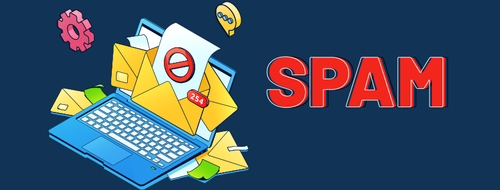Navigating the maze of email marketing can be challenging, especially when faced with the ever-present hurdle of spam filters. With email remaining a critical tool for reaching out to customers, it's essential to ensure your messages land in the inbox, not the spam folder. This guide provides essential tips for email marketers looking to avoid the spam filter and ensure their messages are seen and heard.
1. Understand Spam Filters
Before you can avoid the spam filter, you need to understand how it works. Spam filters use algorithms to analyze incoming emails based on specific criteria such as the sender's reputation, the email's content, and recipient engagement. Familiarize yourself with these criteria to tailor your strategy accordingly.
2. Keep Your Email List Clean
One of the most important practices in email marketing is maintaining a clean email list. Regularly remove inactive subscribers and those who have not engaged with your emails over a considerable period. This not only improves your open rates but also signals to email providers that your recipients are interested in your content, reducing the likelihood of being marked as spam.
3. Get Permission through Opt-In
Always obtain explicit permission from recipients before sending them emails. Using a double opt-in method, where subscribers confirm their email address after signing up, is even better. This ensures that your email list is comprised of people genuinely interested in your content, which enhances engagement and reduces spam complaints.
4. Accurate and Clear Subject Lines
Avoid misleading subject lines that promise something the email doesn’t deliver. Not only is this a common practice in spam emails, but it's also a surefire way to disappoint subscribers. Keep your subject lines clear, concise, and relevant to the content of your email.
5. Personalize the Email Content
Personalization is key to engaging your audience and steering clear of the spam filter. Tailor your emails based on the subscriber's interests, previous interactions, and behaviors. Personalized emails are more likely to be opened and less likely to be marked as spam.
6. Avoid Spammy Language and Formatting
Certain words, phrases, and formatting choices are red flags for spam filters. Avoid excessive use of words like “free,” “guarantee,” or “no risk,” and steer clear of using all caps, excessive exclamation marks, and overly flashy HTML designs.
7. Include a Plain Text Version
Some email clients prefer plain text emails or may not support HTML. Including a plain text version of your email ensures that all recipients can view your message, regardless of their email client's capabilities. This also helps in avoiding spam filters that can’t process HTML properly.
8. Use a Recognizable Sender Name
Use a sender name and email address that your subscribers will recognize. This can be your brand name or the name of a person at your company. A recognizable sender name builds trust and reduces the likelihood of your email being marked as spam.
9. Monitor Email Deliverability
Keep a close eye on your email deliverability rates. Tools are available that help you track whether your emails are reaching the inbox, landing in the spam folder, or not being delivered at all. Monitoring these metrics can provide insights into how well you're evading spam filters.
10. Respect Unsubscribe Requests
Make it easy for subscribers to opt-out of your emails and promptly honor unsubscribe requests. Making the unsubscribe process difficult is not only bad practice but can also lead to an increase in spam complaints.
Conclusion:
Evading the spam filter is a critical aspect of successful email marketing. By understanding the workings of spam filters, maintaining a clean email list, practicing good email hygiene, and engaging your audience with personalized content, you can significantly increase the chances of your emails reaching the intended inbox. Remember, the goal of email marketing is not just to avoid spam filters but to create valuable, relevant content that resonates with your audience, fostering trust and engagement.



